What types of advertising does Google Ads offer ?? Which formats are best suited to sales or lead acquisition?
Today, Google offers a wide range of services, including hosting, cloud services, mapping and much more.
But the best-known and most profitable for Google is its Google Ads advertising system.
With over 90% of searches carried out on its search engine, Google reigns supreme over digital advertising, along with Facebook.
What’s more, for companies and e-tailers using Google Ads as an advertising lever, the return on investment is immediate, and 50% of people who click on an ad are more inclined to buy than others – those who click on the free, “natural” SEO links.
Google Ads enables companies of all sizes and budgets to create advertisements targeted at people who are actively searching for their service.
It’s a powerful lever for reaching more Internet users and a targeted clientele of consumers.
But how do you use this tool provided by the Internet giant? How can you ensure that your campaigns meet your business objectives and become a real advantage for your company or online store?
Increase sales and attract new customers
1. The essential Google Ads figures
Many companies choose to create Google ads to showcase their products and services. This approach is strategic for many businesses. This is because
company awareness increases by 80% thanks to Google Ads.
63,000 Google searches are carried out every second.
90% of online searches are carried out on Google.
Google has a 73% market share in digital advertising.
65% of companies have a Pay per click campaign
46% of clicks on search engines go to the first three paid ads.
35% of users buy a product within 5 days of their Google search.
2. The benefits of Google Ads for your business
If you haven’t already, integrating Google ads into your acquisition strategy will bring you a number of benefits.
You’ll be instantly visible, adapting your ads to the searches and requests of Internet users, and arousing the interest of your future customers.
You’ll be able to personalize your ads according to your different prospects and, above all, track your sales targets.
Be immediately visible
Once you’ve created campaigns in your Google Ads account, you’ll have the opportunity to position yourself immediately in Google’s top search results.
Your budget will depend on the type of keyword you’ve selected, the number of products in your catalog and, more generally, the structure and objectives of your campaigns.
Positioning your site in Google’s top results is extremely important, given that 75% of Internet users are content to see only the top 5 sites on the first page of search results.
Generate consumer interest and attract new customers
Internet users want to find information quickly and easily.
Being in first position in the Google search engine can give your company a click-through rate of 34.36% for computers and a click-through rate of 31.35% on smartphones.
On high-demand searches, this can lead to very significant traffic. That’s why you need to target the terms that will bring you conversion and a high volume of business.
Quickly adapt and change your offers and ads
With Google Ads, you can update the content of your offer and review your ads instantly.
This is obviously a major advantage over SEO, which can take a “while” to attract qualified traffic.
For example, if you want to integrate a new range into your e-commerce or a new presentation, you’ll have to wait a few months before conquering the keywords related to this novelty (in SEO).
With Google Ads, evolutions and changes are taken directly into account.
Improve the accuracy of your targeting
Google gives companies using Google Ads the ability to optimize targeting, so that ads are only shown to people who might be interested in the products.
Customize the audience parameters to suit your target.
We also suggest setting up a retargeting strategy.
Tailor your strategy to your objectives
The search engine provides you with advertising formats adapted to your initial strategy and defined objectives.
For example, ads are designed specifically for product sales. To take this a step further, Google has created form extensions for lead acquisition.
This evolution is in line with new business needs. With the decision funnel, leads are more likely to become loyal customers.
To sum up:
Paid positioning enables us to address web users who are in an active search phase: this traffic is therefore highly qualified (much more so, for example, than banner traffic).
Advertisers can choose the keywords on which they wish to be present.
The billing model is “per click” (CPC), so the advertiser only pays for the traffic that actually arrives on the site.
The bidding system enables the advertiser to control the maximum CPC it is prepared to spend on each keyword (the more targeted a word, the more profitable it can be to offer a high bid, as the conversion will be good).
Market tracking tools enable sales to be attributed to each word: we can therefore calculate the cost of acquisition for each keyword and adapt bids according to the results observed.
The campaign can be monitored and modified almost in real time
Versus Search Engine Optimization ➔ traffic generation is immediate.
What are the different types of campaign and when should they be activated?
Before creating a campaign, it is important to consider your company’s strategic priorities:
- What is the target audience or persona?
- What are the informative pages on your site?
- Which pages will convert
- What are the strategic products (loss leaders, high-margin products)?
- What are your prospects looking for?
- What will be the traction campaigns (generic)
- Conversion campaigns (long tail)
- Your sector and the challenges of your campaigns
- Understand your prospects’ research methodologies
- And how to adapt the campaign structure to your website and offers
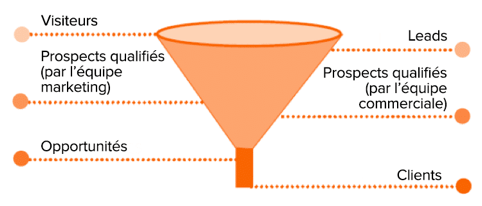
The structure of a Google Ads account can be very different, depending on your company’s objectives and challenges.
For example, in some cases, generic campaigns are rarely deployed, because the aim is to maximize the profitability of campaigns, and to position ourselves only at the bottom of the funnel: in this case, shopping campaigns are the most appropriate, as this format has the highest conversion rate (if we consider the “last click”).
On the other hand, if you want to track the entireconversion funnel, you’ll need to create several campaigns, each with its own objectives and performance. In fact, in a full funnel structure, the challenge will be to track the user journey and the contribution of each campaign to the final conversion(attribution)
As you can see, it’s vital to set objectives for each type of campaign?
If your goal is to create brand awareness, you’ll need to:
- Gain visibility for your site
- Generate cold leads
- Increase your list of new customers
- Generate qualified traffic to the site
If your goal is growth, you’ll need to :
- Increase the number of sales on your site
- Develop sales
- Control and improve ROI (Return on Investment) indicators
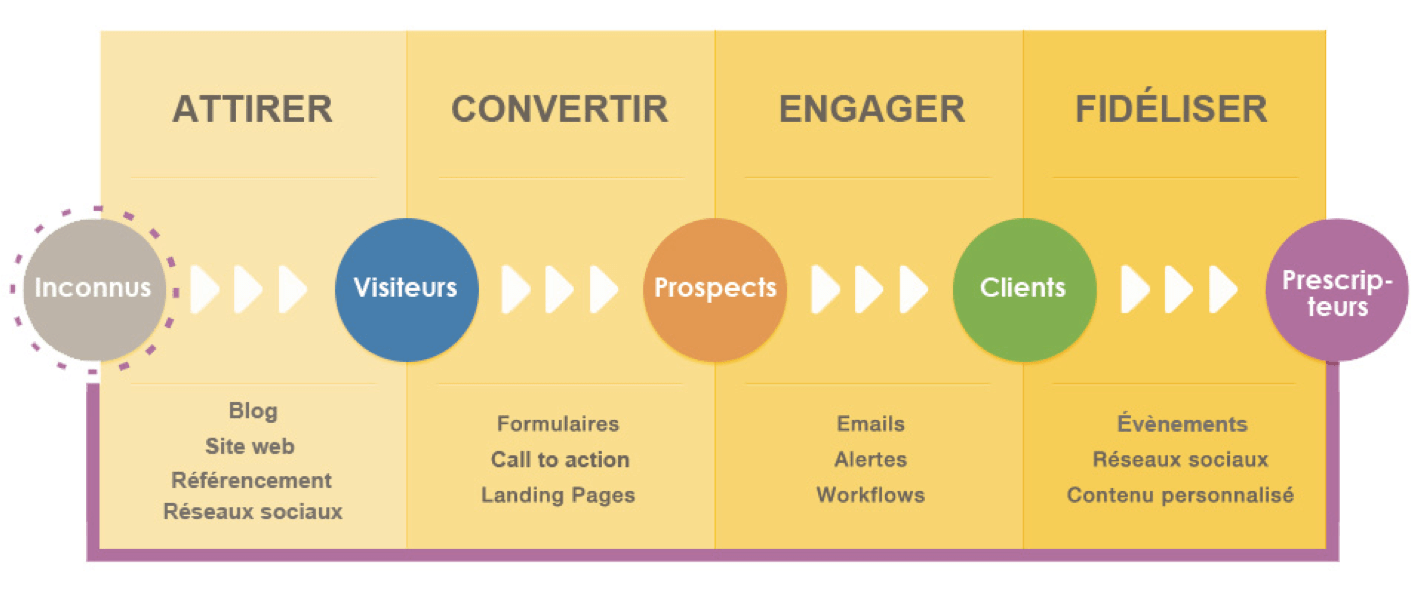
1. Search campaign: text ads and keyword research
Google Ads text campaigns enable you to reach consumers at different stages of their research and needs. You can position yourself on keywords and terms related to your products and services on search engines (Google and Bing).
The key to these campaigns lies in the structure of your account and your campaigns, and consequently in distinguishing between informative searches and searches for hot prospects. In fact, you won’t have the same strategy for these 2 types of search, nor the same return on investment.
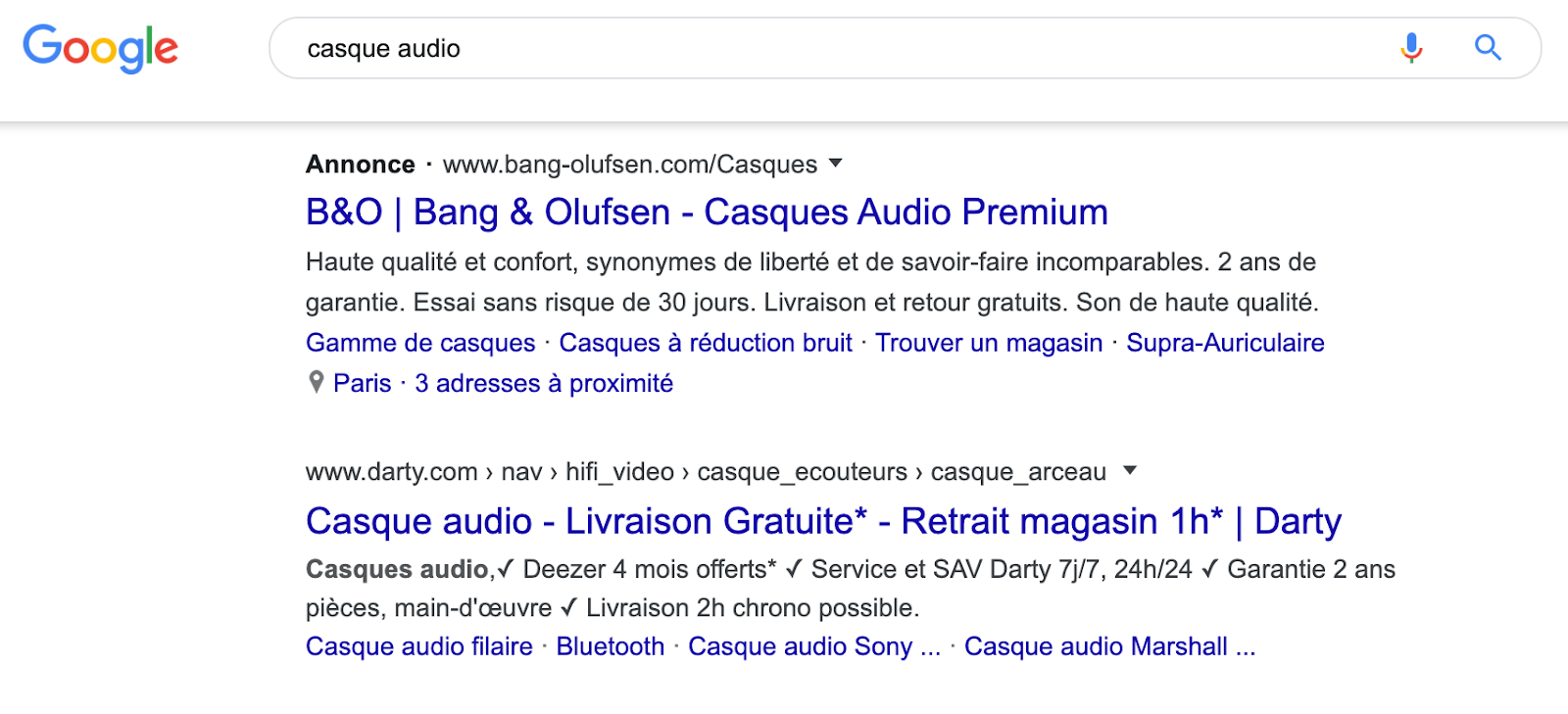
The positioning of advertisers is never identical, and doesn’t depend solely on the price you’re willing to pay!
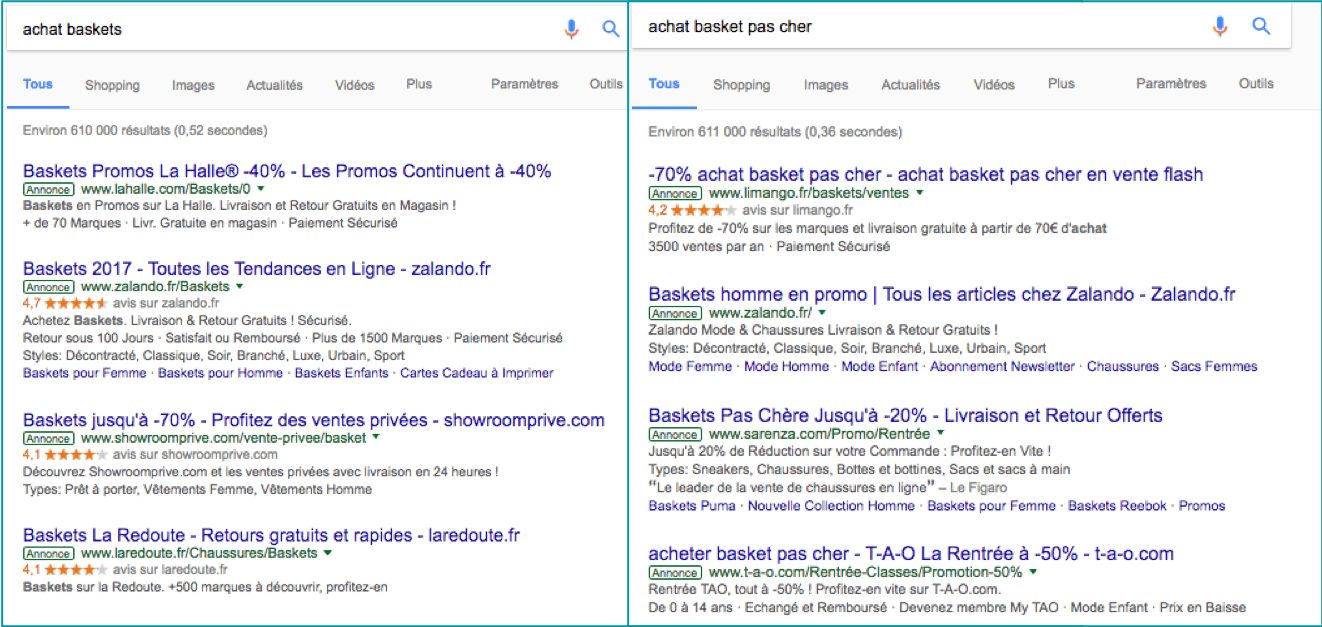
The basic principles :
Paid positioning enables us to address web users who are in an active search phase: this traffic is therefore highly qualified (much more so, for example, than banner traffic).
Advertisers can choose the keywords on which they wish to be present.
The billing model is “per click” (CPC), so the advertiser only pays for the traffic that actually arrives on the site.
The bidding system allows the advertiser to control the maximum CPC it is prepared to spend on each keyword (the more targeted a word, the more profitable it can be to offer a high bid (since the conversion will be good).
Market tracking tools enable sales to be attributed to each word: we can therefore calculate the cost of acquisition for each keyword and adapt bids according to the results observed.
The campaign can be monitored and modified almost in real time
Versus Search Engine Optimization ➔ traffic generation is immediate.
2. Dynamic Search Ads (DSA)
Dynamic Search Ads (DSA) are ads targeted to the content of your website.
The use of Dynamic Search Ads (DSA) allows you to appear on search terms related to the content of your website or a particular page
The advantage of DSA is that it allows you to capture traffic that is not currently being captured by existing campaigns within the account.
The advantages of DSA :
- No keywords to “buy”; ads benefit from a dynamic title that automatically adapts to the user’s query – and a dynamic url that redirects to the most appropriate page on your website.
- Ads feature a dynamic title that automatically adapts to the user’s query, and a dynamic URL that redirects to the most appropriate page on your website.
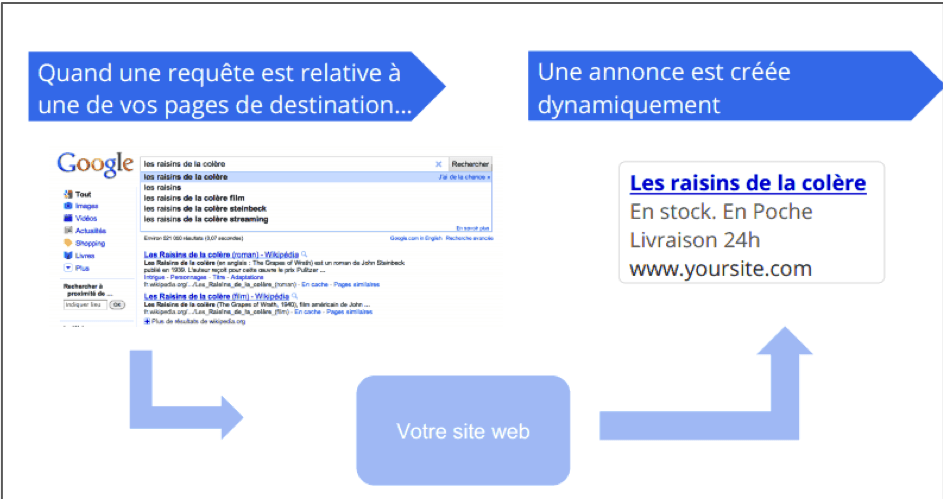
3. Remarketing campaign (text, banners, videos)
Remarketing enables you to show ads to people who have already visited your website or used your mobile application.
It gives you the opportunity to show ads to people who have already visited your site.
Depending on the actions carried out on your site (e.g. shopping cart abandonment), you will be more or less aggressive (with your bids) in bringing these same people back to your site. This feature is extremely powerful, as it enables you to target the hottest prospects and bring them back to complete their conversion or purchase action.
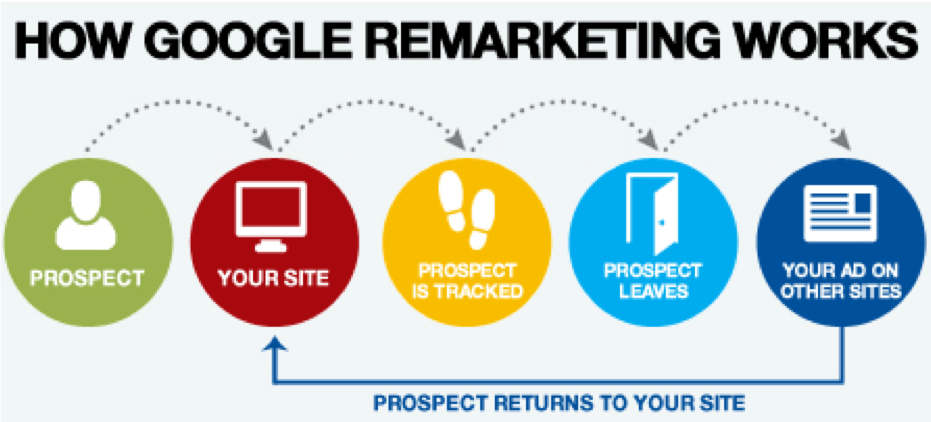
Remarketing methods offered by Google :
- Standard Remarketing: serve ads to your former visitors when they visit Display Network websites and applications.
- Dynamic Remarketing: serve dynamic ads featuring the products and services your previous visitors have viewed on your site when they access web pages and applications on the Display Network.
- Remarketing for mobile applications: serve ads to mobile users who have previously used your mobile application or website when they browse other content.
- Video remarketing: serve ads to users who have interacted with your videos or YouTube channel when they access YouTube and browse Display Network videos, websites and applications.
- Remarketing lists for Search Network Ads (RLSA): serve ads to your former visitors as they search on Google for the products and services they need, after they’ve left your site.
4. Display ad campaign targeting themes and interests
Display ad campaigns targeted by themes and interests give your company the opportunity to appear on sites in the Google Display Network. Generally speaking, these are “upper funnel” campaigns, which allow you to work on visual advertisements, since they are images and banners, which will enable you to take advantage of other sites’ traffic to make yourself known.
The Display Network is a collection of Google websites (for example, Google Finance, Gmail, Blogger and YouTube), partner sites, mobile sites and applications that display Google Ads based on page content.
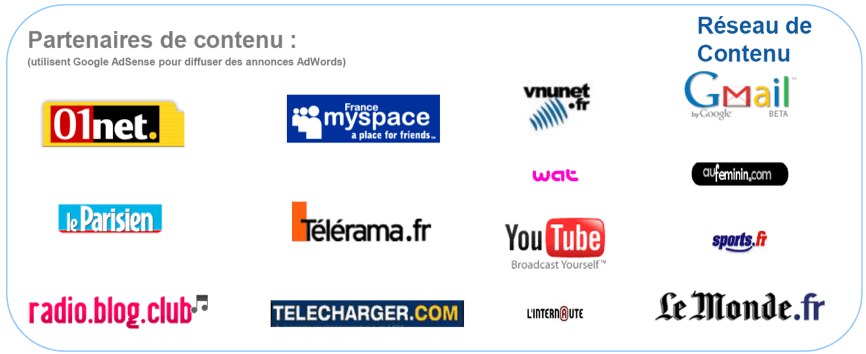
You can use attractive ad formats to reach a large number of customers with varied interests. With the Display Network, you can increase brand awareness, build customer loyalty, generate more customer interaction and choose more specifically where your ads are displayed, as well as the type of audience you want to target.
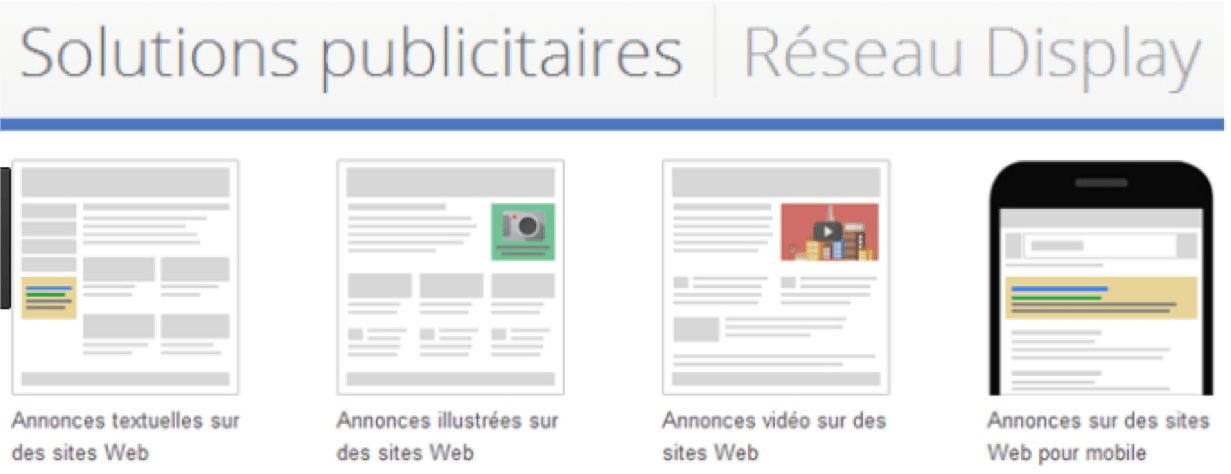
Features :
Several distribution methods: by keyword, by site, by category…
The business model: auctions and CPC payments
It is possible to find out which sites you are distributed on and “blacklist” sites deemed irrelevant or unprofitable.
This traffic is less qualified than search traffic because Internet users are not actively searching for information.
5. Google Shopping campaigns
Within Google advertising, you can choose Shopping campaigns. This is the most popular format for e-commerce. In fact, it’s currently the Google advertising format that generates the most conversions and sales.
Shopping campaigns for merchant sites using the Google Merchant Center enable them to display ads presenting their products (photos, product name, price) during Google.fr searches.
We recommend that you read or re-read our articles on the subject:
Google Shopping campaigns: A necessity for e-tailers?
Highlights :
- Promote your products in a high-impact format (photo) when web users are actively looking for a product.
- Increased visibility with double display: classic text ad + product ad.
- Easy to target and set up.
Weaknesses :
- Requires a Google Merchant Center account, which is not available in all countries or for all merchant sites (e.g.: prices must be inclusive of VAT, whereas some B2B sites are exclusive of VAT).
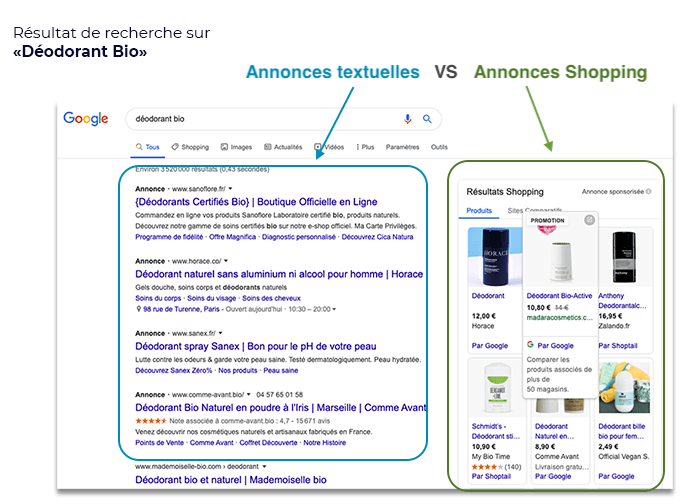
CONCLUSION
The success of Google campaigns has been proven. Depending on your company’s objectives, choose the right ads for your online store and your products;
Before creating a campaign, it is important to:
- Understand prospect and customer research methodologies
- Adapt the structure of your campaigns to your website
- Think about your real needs: brand awareness or sales
This will determine the structure of your Google Ads campaigns, which represents 60% of the optimization of your account.
In addition, the structure of your campaigns must be constantly evolving, because not only are your users’ behaviors changing, but so are you and your offer.
If you need more information and advice on your acquisition or tips on how to structure your SEA accounts and campaigns, our team ofSEA Experts is available to talk to you.



